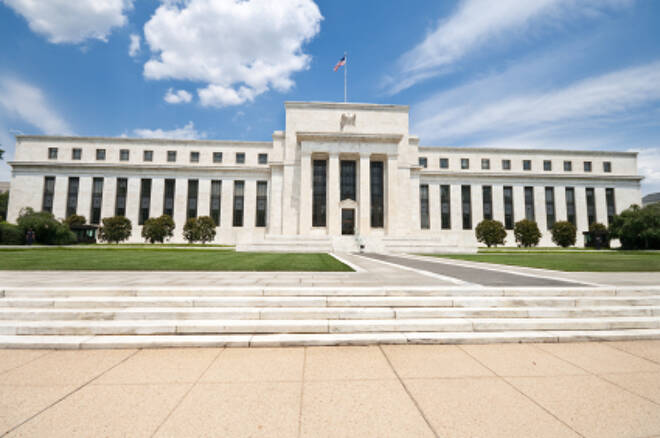Advertisement
Advertisement
Hawkish Fed Drives U.S. Dollar to 14-Year High
By:
The U.S. Dollar was the star currency last week, rising sharply against a basket of currencies after the U.S. Federal Reserve surprised investors by
The U.S. Dollar was the star currency last week, rising sharply against a basket of currencies after the U.S. Federal Reserve surprised investors by forecasting three interest rate hikes in 2017. Additionally, on December 14, the Fed raised rates for second time in 10 years, boosting their benchmark short-term interest rate target by 25-basis points to 0.50 to 0.75 percent.
In dot plot forecasts released after its meeting last week, Federal Open Market Committee members also indicated that they could hike the fed funds target rate three times next year, instead of the two 25-basis point increases previously forecast for next year in its September. They also raised the forecast for future years to three hikes in both 2018 and 2019.
The number of rate hikes could increase even more once President-elect Donald Trump officially takes office on January 20. Fed Chair Janet Yellen, during her post-meeting press briefing, said that some Fed officials considered the president elect’s proposals in their protections.
The Fed’s actions helped spike U.S. Treasury yields which made the U.S. Dollar a more attractive investment. The U.S. Dollar Index rose to a 14-year high with the March futures contract closing at 102.924, up 1.969 or +1.95% for the week.
In major economic news last week, U.S. retail sales barely rose in November, according to the Commerce Department. Retail sales edged up 0.1 percent after two straight months of strong gains. October retail sales were revised downward.
The Labor Department said on Thursday its Consumer Price Index rose 0.2 percent last month. This was in line with expectations. The CPI advanced 0.4 percent in October. In the 12 months through November, the CPI increased 1.7 percent, the biggest year-on-year gain since 2014.
The housing sector took a hit at the end of the week with Building Permits coming in at 1.20 million units versus a 1.24 estimate. Housing Starts fell to 1.09 million units versus 1.23 million units.
AUD/USD
The Australian Dollar declined against the U.S. Dollar last week as investors made major adjustments to their positions on the prospects of higher interest rates in the U.S.
In economic news, the Employment Change report indicated a strong labor market. It showed the economy added 39.1K jobs in November versus a 17.6K estimate and a 15.2K read for October. The Unemployment Rate rose slightly to 5.7%, up from 5.6% previously and the estimate.
The labor market data was not enough to overcome the hawkish tone of the Fed, however. The AUD/USD closed the week at .7298, down 0.0148 or -1.99%.
NZD/USD
The New Zealand Dollar also fell as the spread between New Zealand interest rates and U.S. interest rates continued to tighten. Additionally, the recent monetary policy statement by the Reserve Bank suggests a dovish tone, while the Fed is clearly hawkish.
Furthermore, there are growing concerns in both Australia and New Zealand over President-elect Trump’s plans to scrap free trade agreements and raise steep tariff barriers, with China the target. This could have a negative effect because China is Australia and New Zealand’s largest export market.
The NZD/USD closed the week at .6952, down 0.0181 or -2.53%.
Related Articles
Oil Fundamental Weekly Analysis
Gold Weekly Technical Analysis
About the Author
James Hyerczykauthor
James Hyerczyk is a U.S. based seasoned technical analyst and educator with over 40 years of experience in market analysis and trading, specializing in chart patterns and price movement. He is the author of two books on technical analysis and has a background in both futures and stock markets.
Advertisement
